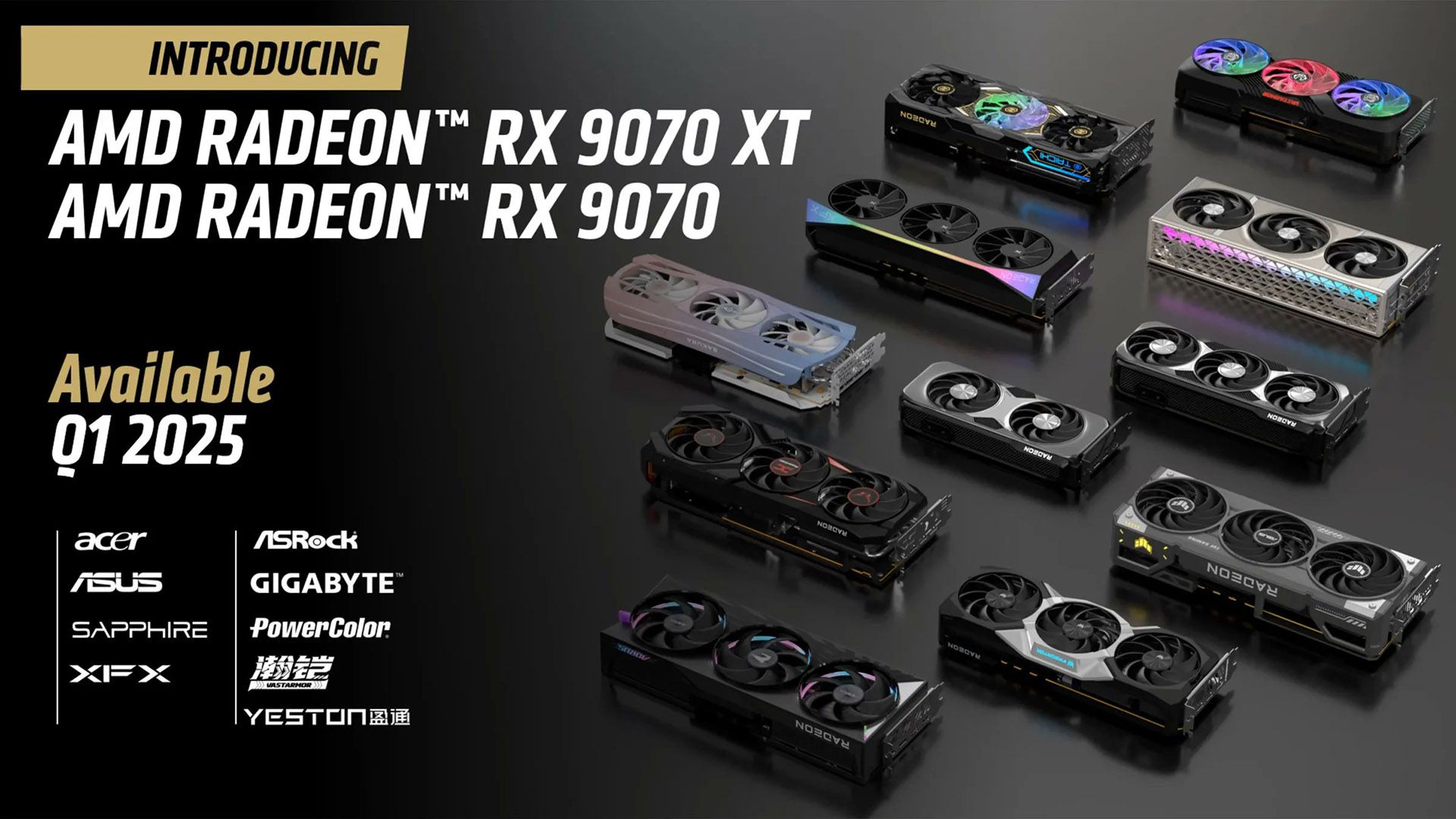It’s been a couple of years since the last time we got a new generation of GPUs. Intel got the ball rolling with its second-gen Arc cards, which means it’s time for NVIDIA and AMD to make a move themselves. AMD is unveiling its range of RDNA 4 GPUs, starting with the Radeon RX 9070 and the RX 9070 XT.
AMD just unveiled the Radeon RX 9070 XT and RX 9070 GPUs during CES 2025, the very first graphics cards making use of the RDNA 4 architecture. The RDNA 4 architecture is, according to AMD, a ground-up redesign, boasting “a significant boost in AI,” optimized compute units, enhanced ray tracing performance, and improved media encoding quality. RDNA 4 cards will also feature AMD’s second-gen AI accelerators, third-gen ray tracing accelerators, and a second-gen radiance display engine.
The most notable part of this announcement, at least for now, is the introduction of FidelityFX Super Resolution 4 (FSR 4), a new generation of AMD’s upscaling and frame-generation technology. Powered by machine learning and specifically designed for RDNA 4’s AI hardware, FSR 4 will be exclusive to the RX 9070 series initially and will be supported in games with FSR 3.1 integration. Microsoft’s Matt Booty confirmed that Call of Duty: Black Ops 6 will feature FSR 4 support later this year.
Unfortunately, this announcement is uncomfortably light on details. Aside from Matt Booty going on stage to confirm that the new Call of Duty game will have FSR 4, it was the only mention of FSR 4, and the new RDNA 4 cards weren’t mentioned once during the keynote. We know that FSR 4 is using dedicated AI accelerators in a similar way to DLSS (which by extension makes it exclusive to RDNA 4 cards), but we don’t know exactly in which other ways FSR 4 is better than FSR 3, or how it compares to its predecessor or to competitors such as DLSS. We also don’t know how the Radeon RX 9070 XT and the RX 9070 compare to other cards. They might be comparable to NVIDIA’s RTX 4070/4070 Ti, especially as AMD seemingly gave up on high-end cards.
RDNA 4 cards are slated for a Q1 2025 release and they should land on store shelves from a variety of third-party manufacturers over the next few weeks, so keep an eye at your favorite graphics card brand.
Source: The Verge





